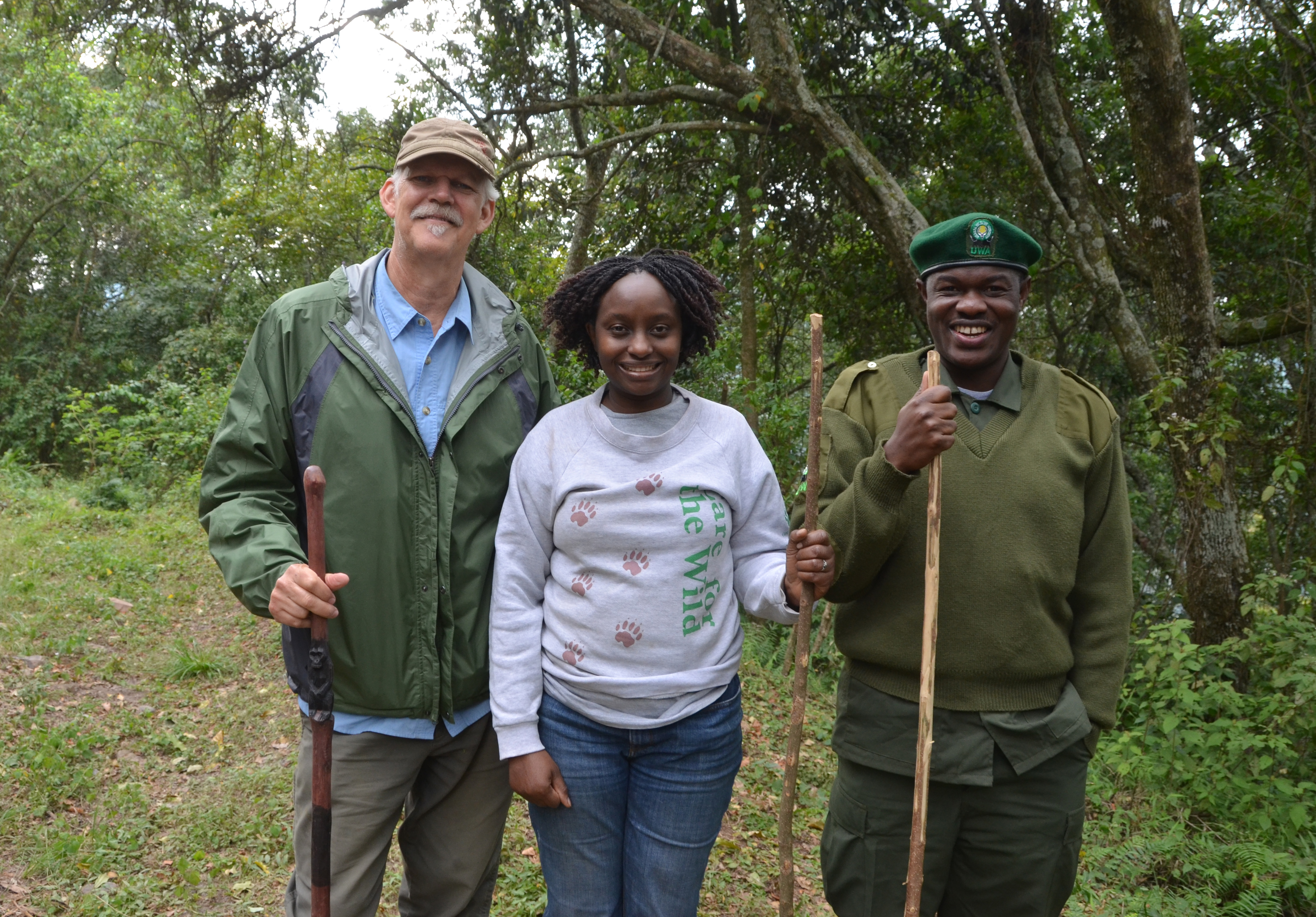High in the mountains of Eastern Uganda, I'm standing a few steps from a magnificent silverback gorilla, who grabs a thick vine with both hands and uses his massive strength to yank it down from the trees. A cascade of foliage falls around him and he begins -- one by one -- to eat the vine's leaves. Spend a few days photographing mountain gorillas and you quickly learn that it takes a lot of greenery to fuel a 400-pound vegetarian.
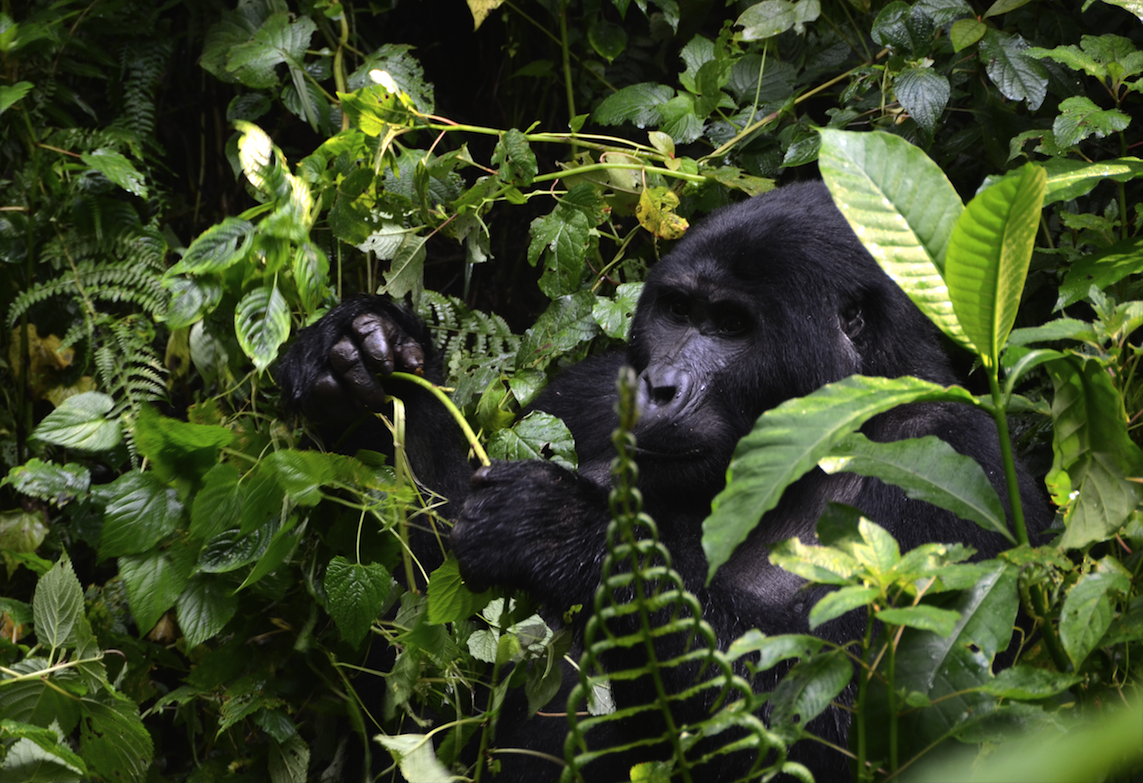
Though I'm feeling a little too close to this big gorilla, standing in front of me is Dr. Gladys Kalema-Zikusoka, the Ugandan gorilla doctor who founded an amazing organization called Conservation Through Public Health. CTPH has had impressive success helping to guarantee the health and well-being of the gorillas, as well as the people and animals of the surrounding communities.
"He's the lead silverback of the Bitikura group," Dr. Gladys tells me in a hushed voice. "He recently took over from Karamuzi, who's an older aging silverback, but allowed him to stay in the group. As she says this, I am filming Dr. Gladys and the ipad she is using to shoot her own video. (You can see this scene in my new short film about CTPH -- The Gorillas of Bwindi.)
We've hiked for hours to be in the midst of these twenty beautiful gorillas -- all happily munching, playing and grooming in our presence. Above us, a young black back male is climbing a 60' tree trunk like a bear. Through a small tunnel of vegetation that has been hacked open by our Ugandan Wildlife guides, two young juveniles are rolling on top of each other and pouncing on other members of the group. Other babies are clinging to their mother's backs as they move further from the clicks of cameras.
'Would you like to see the nests?" Gladys asks me before starting up a nearly vertical mountainside.
Each adult gorilla builds a new nest nightly out of leaves and vines. The nests are helpful in the ongoing census of gorilla numbers. And thanks in great part to the work of CTPH, mountain gorilla populations are actually increasing.
Twenty minutes later and both gasping for breath, we come to a group of fresh gorilla nests where Gladys sets to work. In addition to flowers, each next is adorned by gorilla dung, which helps keep the gorillas warm in the cold nights. With surgical gloves and tools, Gladys is soon taking and labeling dung samples which enable CTPH vets to analyze each gorilla's health, and which provide a baseline for comparison if the gorillas contact some human or animal pathogen from visitors or the farms that closely surround the park.
Turk Pipkin with Dr. Gladys Kalema-Zikusoka and Simplicious Gessa of UWA
Gorillas share over 98 percent of our DNA, making them highly susceptible to diseases transmitted to them by humans, including TB, which is prevalent in much of Uganda. A graduate of the University of London's Royal Veterinary College, Dr. Gladys founded CTPH after a baby gorilla contracted human scabies (possibly from a discarded hat), lost its hair and died of exposure.
"The only long-term and sustainable method to improve gorillas' health is by improving the health of the people living around the park," says Dr. Gladys, "and not just the people, but their livestock as well."
CTPH has an extensive outreach in the surrounding farm communities, working for clean water, education, opportunity, health care and family planning. I've filmed rural health care efforts in many corners of the globe, but have never been more impressed than I was by a CTPH rural health volunteer named Hope Mascoe. Using hand painted flip charts, Hope contrasted the downward spiral of families with large numbers of children in contrast to those that utilize family planning to have children when they are ready and able to provide them proper food and education. Coupled with family planning alternatives that include Depo Provera injections, this is an extraordinary family planning program in a nation where the population has exploded from 6 million to 36 million in just fifty years.

Bwindi Impenetrable National Park has over half the world's 880 mountain gorillas. There are no mountain gorillas in zoos, which helps reduce the threat of poachers trying to snatch a baby for a big illegal payday. A family of gorillas will die before giving up their young so the taking of one baby can be catastrophic.
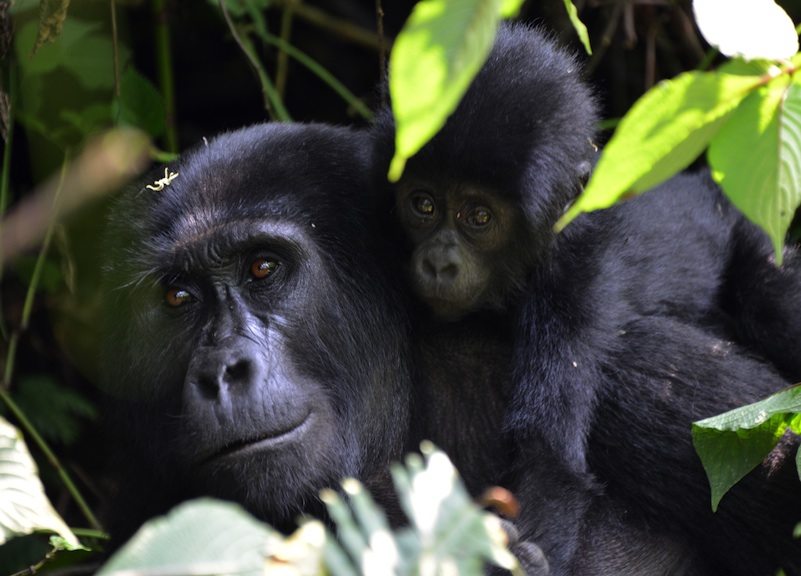
Working out of a tiny gorilla clinic, CTPH monitors the health of the gorillas at Bwindi Impenetrable Park in Uganda, and works closely with Uganda Wildlife Authority and with other partners in the neighboring gorilla parks in Rwanda and in Congo (where gorilla tourism is currently closed due to the ongoing civil war).
I thought my first trip to Bwindi to see the gorillas would be a once-in-a-lifetime visit. The numbers of visitors are tightly controlled and gorilla permits cost $500 for a single trek (going up soon to $600/day). There are multiple gorilla groups that are habituated for tourism. The actual hikes to the various gorilla groups can range from half an hour to a full and exhausting day. These are steep mountains and chances are you'll be both exhilarated and exhausted by your trek. To keep the gorillas from becoming too accustomed to humans, you only spend one hour in their midst. When you are taking stills, shooting video and trying to enjoy the incredible wonders around you, one hour is not nearly enough.
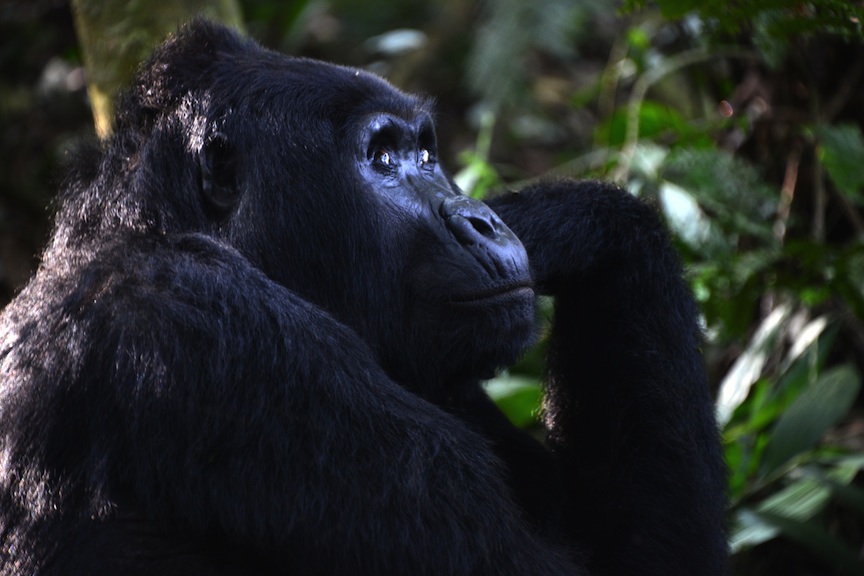
Last summer I was with the Rushegura group when a baby gorilla -- who apparently had not attended our briefing session -- ignored the recommended 10-meter minimum distance between humans and gorillas. Perhaps it was the way I had my arms wrapped around a tree to hold my camera, but in just a few seconds the baby gorilla had come up to me and was touching my boots. The thrill was extraordinary, but would soon be topped by the lead silverback announcing I was too close by charging at me with a fierce roar. Behind me, our guide placed his hand on my shoulder and said, "Don't run." As predicted, the gorilla's bravado was just a false charge. Seeing my eyes averted and no threat or challenge, the silverback stopped eight feet away, pounded his chest a couple of times, then disappeared into the brush.
As soon as I started breathing again, I was already making plans to return.
- For budget travelers, CTPH runs a Gorilla Conservation Camp with safari tents and full board for $50 per day. Who knows -- you may see gorillas without even entering the park. On my last visit, their were gorillas hanging out near the lodge parking lots on the fringes of the little town of Bwindi.
- Or you can do take that trip of a lifetime and stay at the beautiful Silverback Lodge (www.silverbacklodge.com). High on a hill overlooking the forest and the little town of Bwindi, Silverback has lovely rooms, great food, hot showers and nightly campfires by the bar, all hard to beat after a long days' trek.
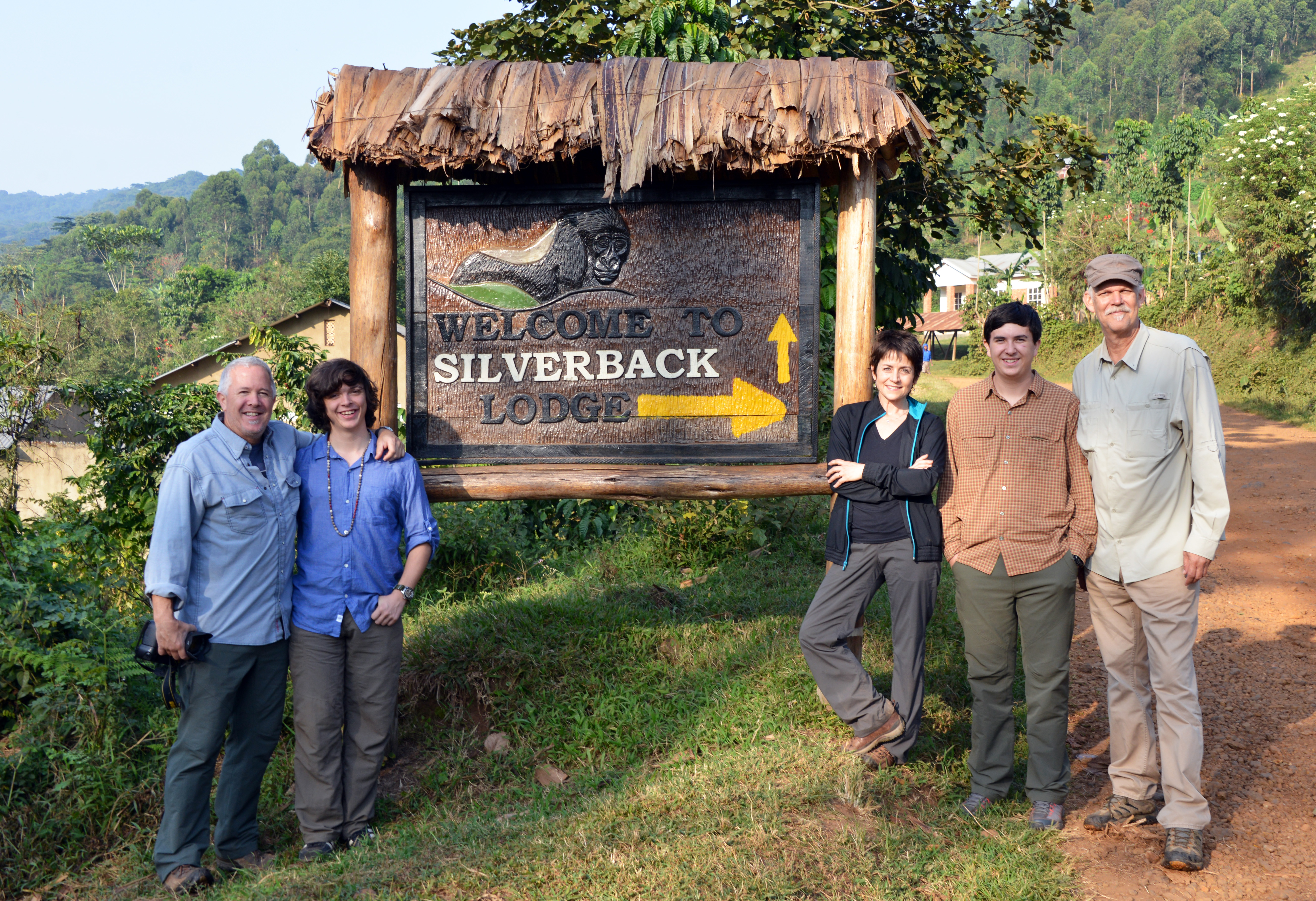
- Premiere Safaris has also a partnered with CTPH on an Ultimate Mountain Gorilla Experience -- a four-day trip to Bwindi that includes an option of trekking with Dr. Gladys herself. Either way you'll be playing a part in supporting the local community, which is key to protecting this beautiful and endangered species.
- The primary limit on the work of CTPH is the size of their modest gorilla research clinic. The NGO has acquired a lovely piece of land adjacent to Silverback Lodge and is raising funds to build a greatly expanded gorilla clinic, as well as a visitor education center that go even further in connecting visitors to this amazing rural community. This effort is worthy of support from all quarters, and is one of the great and inspiring examples of how we could be partnering with local communities to protect endangered species in many corners of the globe.
- To Learn more and support their work, including the new Gorilla Research Clinic, go to www.ctph.org
- My short film - The Gorillas of Bwindi - profiles the work of Dr. Gladys and CTPH, and will premiere this Wednesday in a private event sponsored by WINGS World Quest at The Explorers Club in New York City. The film is also online at The Nobelity Project's YouTube channel:
- To Learn More about The Nobelity Project, go to: www.nobelity.org
- all photos © turk pipkin and the nobelity project
